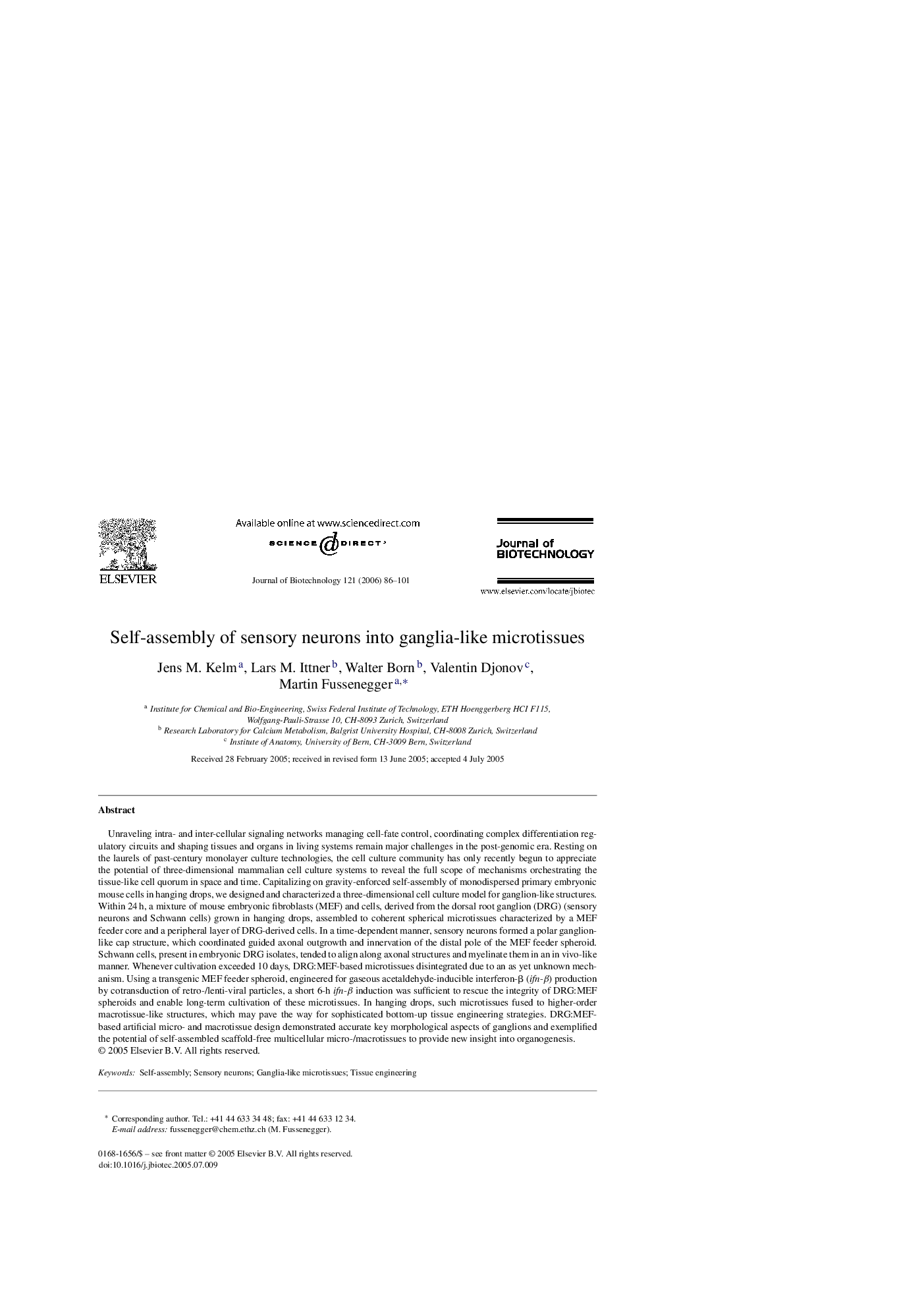| Article ID | Journal | Published Year | Pages | File Type |
|---|---|---|---|---|
| 25795 | Journal of Biotechnology | 2006 | 16 Pages |
Unraveling intra- and inter-cellular signaling networks managing cell-fate control, coordinating complex differentiation regulatory circuits and shaping tissues and organs in living systems remain major challenges in the post-genomic era. Resting on the laurels of past-century monolayer culture technologies, the cell culture community has only recently begun to appreciate the potential of three-dimensional mammalian cell culture systems to reveal the full scope of mechanisms orchestrating the tissue-like cell quorum in space and time. Capitalizing on gravity-enforced self-assembly of monodispersed primary embryonic mouse cells in hanging drops, we designed and characterized a three-dimensional cell culture model for ganglion-like structures. Within 24 h, a mixture of mouse embryonic fibroblasts (MEF) and cells, derived from the dorsal root ganglion (DRG) (sensory neurons and Schwann cells) grown in hanging drops, assembled to coherent spherical microtissues characterized by a MEF feeder core and a peripheral layer of DRG-derived cells. In a time-dependent manner, sensory neurons formed a polar ganglion-like cap structure, which coordinated guided axonal outgrowth and innervation of the distal pole of the MEF feeder spheroid. Schwann cells, present in embryonic DRG isolates, tended to align along axonal structures and myelinate them in an in vivo-like manner. Whenever cultivation exceeded 10 days, DRG:MEF-based microtissues disintegrated due to an as yet unknown mechanism. Using a transgenic MEF feeder spheroid, engineered for gaseous acetaldehyde-inducible interferon-β (ifn-β) production by cotransduction of retro-/lenti-viral particles, a short 6-h ifn-β induction was sufficient to rescue the integrity of DRG:MEF spheroids and enable long-term cultivation of these microtissues. In hanging drops, such microtissues fused to higher-order macrotissue-like structures, which may pave the way for sophisticated bottom-up tissue engineering strategies. DRG:MEF-based artificial micro- and macrotissue design demonstrated accurate key morphological aspects of ganglions and exemplified the potential of self-assembled scaffold-free multicellular micro-/macrotissues to provide new insight into organogenesis.
